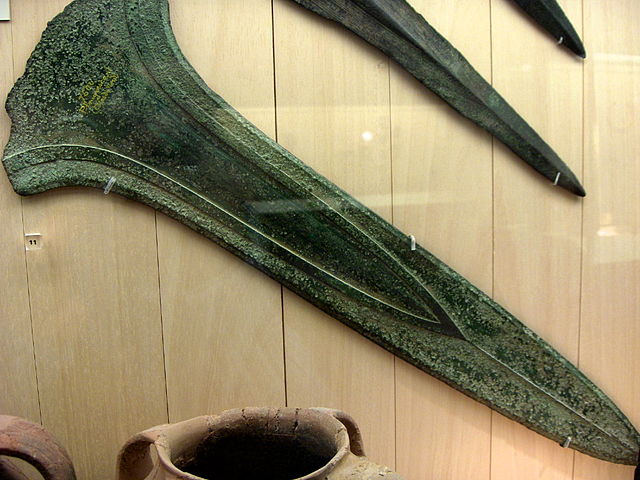The Oxborough Dirk is a large ceremonial weapon or dirk from the Middle Bronze Age. One of only six such objects across Europe, it was found in a rural part of the county of Norfolk, England in the 1980s and is now part of the British Museum's prehistoric collection.
The Oxborough Dirk at the British Museum
The Plougrescant Dirk in the Musee des Antiquites Nationales, Saint-Germain-en-Laye, France
Detail of the hilt from the Oxborough Dirk
Ommerschans Dirk in the National Museum of Antiquities in Leiden
A dirk is a long-bladed thrusting dagger. Historically, it gained its name from the Highland dirk where it was a personal weapon of officers engaged in naval hand-to-hand combat during the Age of Sail as well as the personal sidearm of Highlanders. It was also the traditional sidearm of the Highland Clansman and later used by the officers, pipers, and drummers of Scottish Highland regiments around 1725 to 1800 and by Japanese naval officers.
Scottish dirk, blade by Andrew Boog, Edinburgh, c. 1795, Royal Ontario Museum
Painting of George Gordon, 5th Duke of Gordon (1770–1836) in highland dress.
Dirk (Polish: Kordzik); element of uniforms as well, e.g. of officers in the Polish army air force; 74 × 370 mm in Muzeum Miniaturowej Sztuki Profesjonalnej Henryk Jan Dominiak in Tychy
Japanese WW2 naval dirk








